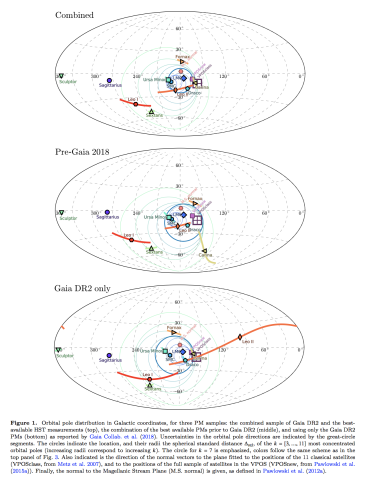Today my newest first-author paper appeared on the arXiv. It was recently accepted for publication in MNRAS. In it, I revisit the orbital alignment of the 11 classical satellite galaxies with their spatial distribution, the disk (or plane) of satellite galaxies. Gaia DR2 provided us with an entirely independent data set to compare with previous proper motion measurements that were based on ground-based observations or Hubble Space Telescope data. It turns out that the new Gaia data strikingly confirms our previous findings: the majority of the 11 classical (i.e. brightest) Milky Way satellite galaxies co-orbits within the plane defined by their positions. Combining the best-available proper motions from the different sources for each of the satellites even reveals a tighter clustering of their orbital poles (= directions of angular momentum around the Milky Way) than ever seen before. This is in line with a strong underlying correlation that becomes more and more apparent as measurement uncertainties are reduced.
We also compare the observed correlation with the state-of-the-art cosmological simulation IllustrisTNG, and find that similarly correlated satellite systems are exceedingly rare in this ΛCDM universe. The Planes of Satellite Galaxies Problem thus becomes even more severe with the addition of this new data.
If you don’t want to read the full 20-page paper, you can find a summary of our main findings in my corresponding Twitter thread.

